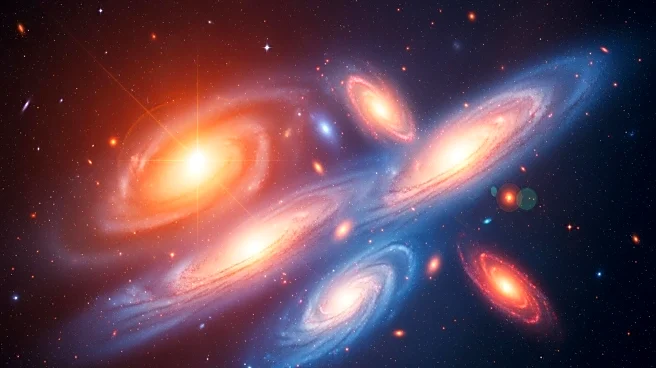What's Happening?
The James Webb Space Telescope (JWST) has uncovered massive galaxies in the early universe, challenging existing theories about star formation. Researchers using the Atacama Large Millimetre/submillimetre Array (ALMA) have identified a galaxy, Y1, with
an exceptionally high star formation rate (SFR), about 180 times greater than the Milky Way. This galaxy, observed at redshift 8.3, is seen as it was 600 million years after the Big Bang. The presence of superheated dust in Y1 masks its high SFR, suggesting that rapid bursts of star formation may have been common in the early universe. This discovery provides a potential explanation for the JWST's findings of massive early galaxies.
Why It's Important?
The findings from JWST and ALMA offer new insights into the conditions of the early universe, particularly the processes that led to the formation of massive galaxies. Understanding these processes is crucial for refining models of galaxy evolution and star formation. The presence of warm dust in early galaxies suggests that they may have been more luminous than previously thought, impacting our understanding of cosmic history. This research also highlights the role of dust-obscured star formation in the cosmic buildup of stellar mass, which can only be revealed through comprehensive observations in the submillimeter regime.
What's Next?
Future research aims to identify more examples of star factories like Y1 to determine how common these phases were in the early universe. ALMA's high-resolution capabilities will be used to study the mechanisms driving these extreme star formation rates. Continued observations will help refine theories about the formation and evolution of galaxies, providing a clearer picture of the universe's early history.
Beyond the Headlines
The discovery of superheated star factories in the early universe challenges existing assumptions about the age and composition of early galaxies. The presence of warm dust, despite a lack of evolved stars, suggests alternative pathways for dust production and star formation. This research underscores the importance of multi-wavelength observations in uncovering the complexities of cosmic evolution.
















